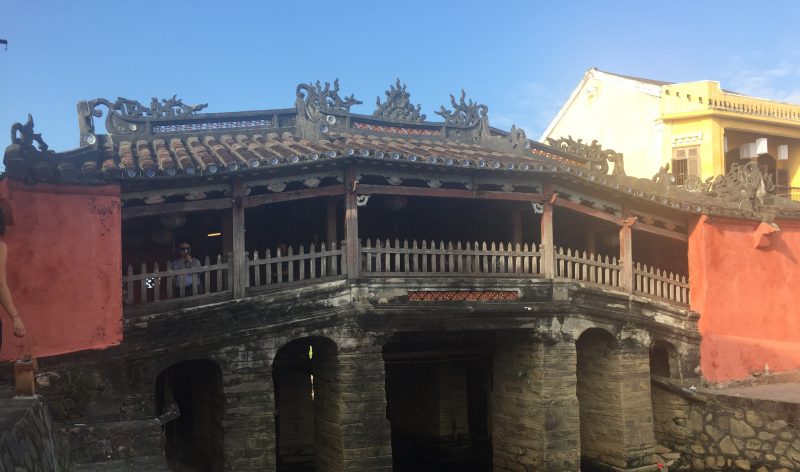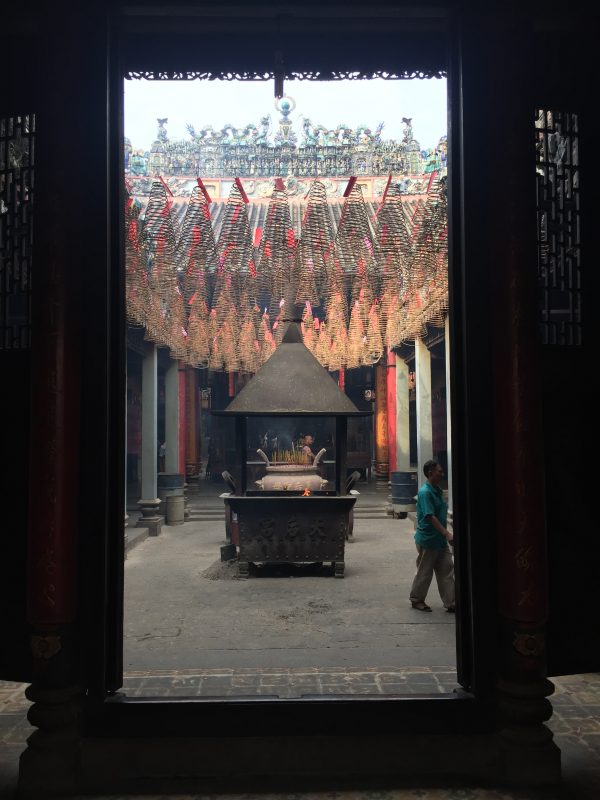Unlocking the Self to Great Design:
Posted on November 30, 2017
Japanese Bridge in the ancient Vietnamese city of Hoi An
I previously talked about self-resonance as a lens to design something great. Now let me speak further about a great design I hope to see, or perhaps, achieve.
I should first give more insight into my decision to quit everything and go on a personal sabbatical of self-reflection. As I said previously, I didn’t know what I wanted to build despite having resources at the conclusion of my fellowship program, Venture for America. Part of not knowing what to build was not knowing myself, and I knew that whatever I built would need to have a piece of me in it. At the time though, the reason for inserting myself into the situation was because of the commitment one takes on to start their own venture. From my experiences, you’re looking at least at a five year commitment, but most likely even longer than that. That doesn’t even take into account the blood, sweat, and tears you must put in.
I had a brief taste when I had to serve as interim CEO of a seed stage start-up after funding was cut after hiring a whole team. The stress of scrambling to get paychecks on the table for co-workers, some of whom were the sole income for a whole family, put an insurmountable amount of stress on me I was not prepared for. To put it into perspective the CEO had been working on this for 2 years already and we were still at the first life cycle stage of the company. So a commitment of that magnitude had to feel authentic and genuine. I didn’t know what to build because I didn’t know myself, even though I was more prepared, more connected, and more capable than many who decide to create something – and a handful of those people are highly successful too.
Part of this self journey was spent traveling through Southeast Asia for 6 months towards the end of last year. It was there that an idea I felt like I could truly get behind took root. But understanding how I fit into it became a challenge.
While I was living in Kuala Lumpur I partook in an exchange through the YSEALI program, an Obama initiative to connect young talent in ASEAN with Americans and US resources to strengthen leadership development in the region. [1] I honestly had no idea what to expect coming in and found that the talent the embassy identified were entrepreneurs or individuals in the start-up space. Listening to the stories of these individuals, like a couple that created a coconut ice cream shop to cover overhead and financing for their fashion tech venture, was refreshing. This type of scrappiness was something I found missing in the world of pipe dreams and babble about “changing the way people X,” you hear about stateside.
So it actually devastated me to learn what their next funding strategy would be. Part of YSEALI are US Exchanges, and they took these budding entrepreneurs to meet and learn from the best of the best in Silicon Valley. Their takeaway from this experience was to run the Big Data gambit and work on developing an algorithm in their eyes, could get funded, and in the VC’s eyes can get sold. What started off as a well intentioned project to focus on Malaysian fashion decision paradoxes turned into a half-baked attempt to scale something that could be sold cross borders, a chase for that mythic unicorn.
I have a lot of criticisms about the US start-up scene, particularly around how VC funding and founder objects shaped each other and as a result, the whole system. What is an alternative to this paradigm of gross capitalism? [2] The saddest example I learned about was a Vietnamese tech company that addressed a real pain point, educational content for kids. In Vietnam there is a great demand for third party educational resources as the country deals with the growing pains of it’s efforts to modernize the education system during the rise of a new, strong, middle class. [3] This product this team made was great and won start-up competitions. Part of the competition was an invite to visit and pitch to Angel Pad, one of the top accelerator programs in the states. [4] Their takeaway from the advice they got? Make content in english. Need I say more…
The valley VCs, and Angel Pad were badly intentioned? Not at all. You could argue that many of these organizations are extremely busy dealing with their own issues. Taking time out of their day to listen to folks on the other side of the world and offering them free consul seems like such a boon. But all it does is make them feel good about their position of privilege, the “white-savior complex” or what I want to rephrase as the “western-savior complex.” [5] None of these people realized how they might’ve derailed these businesses. Neither of these ventures have received funding yet to my knowledge. “If we are going to interfere in the lives of others, a little due diligence is a minimum requirement.”
So throughout this time I wanted to sink my teeth into this problem. I began to meet with entrepreneurs, funders, community leaders. I don’t know what the people need. Part of that is I don’t know exactly what my place is in this sphere. I knew I didn’t want to be like those “western saviors” I had encountered. But I also wasn’t a local, even in Vietnam. I felt like I was in between a rock and a hard place. On one hand, nearly every Vietnamese person I spoke with would tell me, “Welcome home,” when I explained that I’m Vietnamese American. However, these invisible lines would creep in that distinguished ourselves from each other as we carried on a conversation, about anything.
My identity is “fractured” and I’m not sure how to reconcile it, but I can’t deny the affinity that I feel bilaterally in Vietnam. This does not deter me at all though. To riff off of Donna Harraway, there’s a “pleasure in the confusion of boundaries AND for responsibility in their construction.” [6] This encapsulates why this issue feels self-resonant. A project like this is not only a vehicle for a better understanding of myself though, but perhaps a great design.

An unlocked gate of a temple in Saigon
[1] “About YSEALI.” U.S. Mission to ASEAN, asean.usmission.gov/yseali/yseali-about/.
[2] Roberts, Bryce. “What Is Indie.vc.” BRYCE DOT VC, 5 Jan. 2015, bryce.vc/post/107230568735/what-is-indievc.
[3] “Education in Vietnam – Current Trends and Qualifications.” WENR, 27 Nov. 2017, wenr.wes.org/2017/11/education-in-vietnam.
[4] “We Are Different.” AngelPad, angelpad.org/.
[5] Cole, Teju. “The White-Savior Industrial Complex.” The Atlantic, Atlantic Media Company, 21 Mar. 2012, www.theatlantic.com/international/archive/2012/03/the-white-savior-industrial-complex/254843/.
[6] Harraway, Donna. “The Cyborg Manifesto.” The Cybercultures Reader, Routledge, 2000.